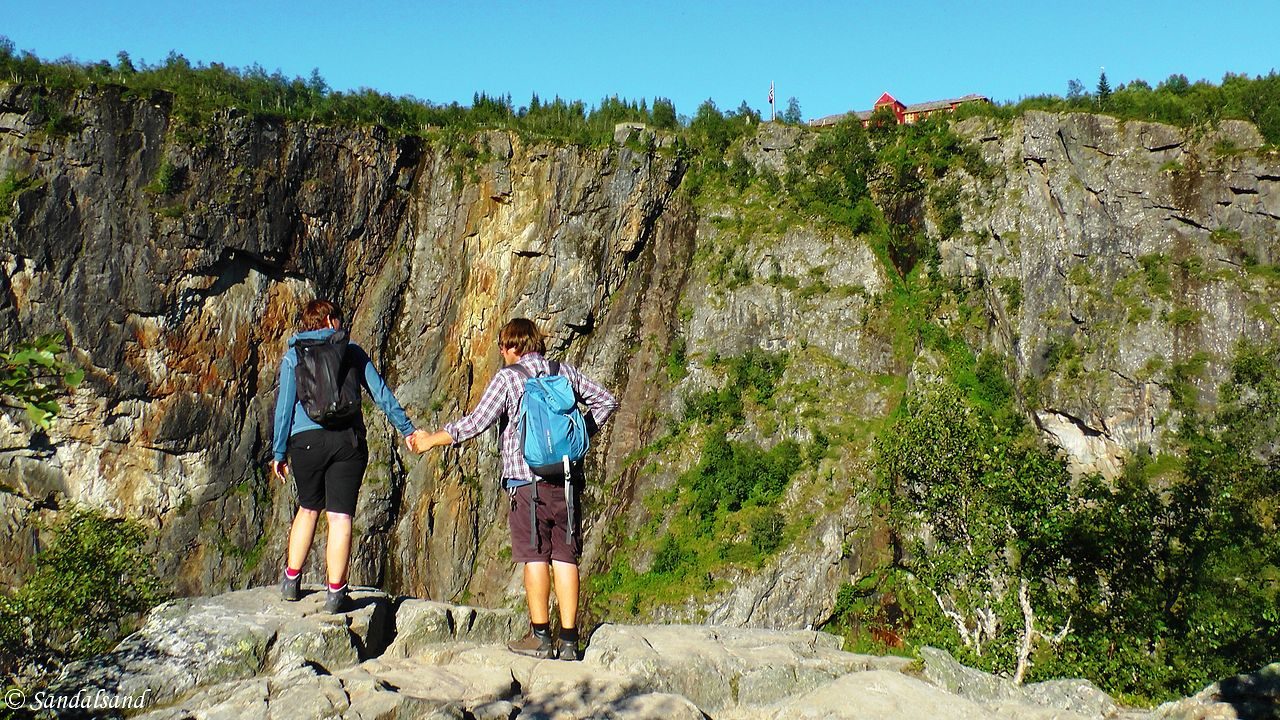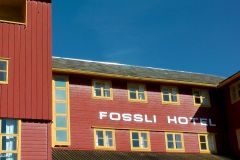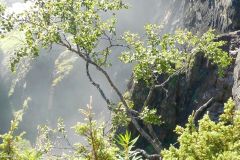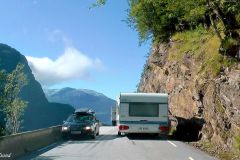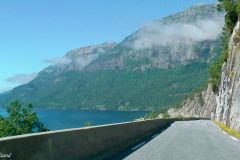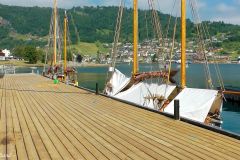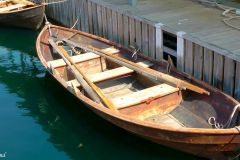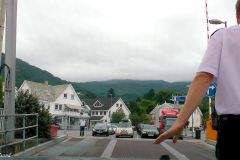A nation has its symbols aimed at defining the nation as such. Vøringsfossen and Hardanger are two defining symbols of Norway as a nation state, one wild and furious and the other mellow and romantic.
National symbols
One such symbol is the once terrifying road winding its way through the wild and rugged Måbø Valley ever higher until it reaches the mountain plateau of Hardangervidda. Right here, on the very edge of the Fjord Country and the vast mountainous areas of central Norway we find the furious waterfall of Vøringsfossen.
In the middle of the 19th century there was a national romanticist movement in Norway. The Hardanger fjord was often seen as one of the most important areas in that respect. Indeed, the painting Brudeferd i Hardanger (Bridal Party in Hardanger) by Gude and Tidemand was seen as grasping the very essence of the traditional, genuine Norway.
The Hardanger fiddle (Hardingfele in Norwegian) has eight or nine strings and was, and still is, used for playing traditional music. This is the instrument in the above mentioned picture.
Hardanger is also about fruits. Springtime, with flowering trees, white snow-capped mountains and a blue fjord is something of the most picturesque you will ever meet, anywhere.
What is perhaps equally picturesque, but quite nerve-wrecking for many visitors, are the narrow roads. Even today, in the perhaps most prosperous country in the world, roads do not hold a high standard. The roads along the Norwegian fjords have always been exciting but also annoying to drive.
Before we get more information about the visit to Vøringsfossen and Hardanger, let us have a short history lesson.
A short history of Norway in the 19th century
As I describe in my entry about stave churches in Norway the country was hit severely by the Black Death from 1349 and the next couple of years. The plague caused a huge decline of the population but contributed also to subjecting the country to foreign rule. In the next 400 “dark” years Norway was in union with Denmark.
That union was not on equal terms. The nobility was removed, the king was quick to join Luther’s Reformation and confiscated land and other material goods from the Catholic Church. New Protestant clerics were Danish or educated in Copenhagen, the law was Danish and so were the law enforcers (police and judges) and military officers. The written language was that of the rulers, and so was the official spoken language.
In the Napoleonic wars the Danish king sided with the losing party. Consequently Norway became a war bounty for Sweden in 1815. That new union lasted until 1905 when Norway finally gained its independence.
A growing nationalism
The consequence of the Danish defeat was foreseen by a group of national enthusiasts.
They gathered in the winter and spring of 1814 to write a constitution based on the principles from the French and US revolutions a few years earlier. The constitution was signed by the participating representatives on the 17th of May 1814. (That date is now the national day of Norway.) The men even invited a Danish prince to become King elect in a free Norway. They failed in this mix of coup-d’état and armed revolution, but the constitution survived and the rest of the 19th century saw a strong and vital build-up of nationalist sentiments, reflected in institutions and culture.
Our visit
Vøringsfossen and Fossli hotel
We arrived at Vøringsfossen yesterday after having taken the ferry on the Nærøyfjord. We were on a four day road trip of the Fjord Country. It was a beautiful day and we felt extremely happy about coming here. This is what what I wrote on Tripadvisor
“Fly back in time. This hotel is a time capsule:
Fossli hotel has a perfect location right on the edge of Norway’s most famous waterfall, the Vøringsfossen. You can’t avoid hearing it and you can’t stop enjoying the superb views. The hotel is set on the perimeter of the vast highland plateau of Hardangervidda, a national park, and a close drive to one of the longest fjords, the Hardangerfjord.
The hotel itself was built in the late 19th centery and must have evolved gradually up until the late 1960’s or even early 1970’s. Since then everything was kind of locked down and no new impulses came in. I almost looked for a black&white TV set in the room, but there was no TV at all. It’s absolutely amazing. A memory to keep for years. We loved it. Food was good and wholesome, not very good or exciting in any way.”
The drive along Hardanger fjord
On this road trip to Vøringsfossen and Hardanger, we set out early the next morning for a long drive westwards. We aimed for the Hardanger Fjord and then south to Stavanger. I will only make a few notes here.
- The national road Rv7 is one of the most important east-west connections in the country. Driving along the fjord you wouldn’t know. It is narrow and we even came up behind a circus on the move. Those vehicles were almost impossible to pass.
- We went on the northern side of the broad Hardanger fjord. The views to the south are astonishing and we could actually see Norway’s second largest glacier on the other side. On our side the villages and hamlets along the fjord were extremely picturesque.
- In Norheimsund we made a stop at the very interesting centre for preservation of old vessels and maritime technology.
This video sums up much of this day:
Read more
You have just read the last chapter from this road trip.
(1) – Stavanger to Lærdal
(2) – Lærdalsøyri
(3) – Solvorn
(4) – Nærøyfjorden
(5) – Vøringsfossen and Hardanger
There are many more relevant articles on this website. Read my introduction to Western Norway, the fjord country. These posts all have videos describing them in more detail. Find the videos in the Norway playlist on my YouTube channel.
